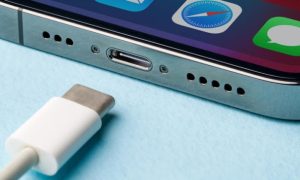With brand-name bottle fads and gallon-a-day water challenges trending on TikTok, hydration is in, and that’s good news for health. The average human body is more than 60% water. Water makes up almost two-thirds of your brain and heart, 83% of your lungs, 64% of your skin, and even 31% of your bones. It’s involved in almost every process that keeps you alive. So if you’ve hopped on the water-drinking bandwagon, you’re doing yourself a big solid.
Also Read– Is your sleep interrupted by leg cramps? Here are some of the most surprising causes

“Water is essential for your body’s survival,” says Crystal Scott, registered dietitian-nutritionist with Top Nutrition Coaching. “It helps regulate your temperature, transports nutrients, removes waste, lubricates your joints and tissues, and it also plays a crucial role in maintaining the delicate balance of electrolytes and fluids in your body.”
You lose water when you breathe, sweat, urinate, and metabolize food and drink into energy. If you don’t replace that fluid, your health can go downhill, and fast. Without food, your body can keep ticking for as long as three weeks or more. But without water, you’ll die in only a few days. There’s just too many systems that depend on it.
“I like to correlate our bodies with planet earth,” says Scott. “Our earth is made up of a large percentage of water. If that amount got too low, what would happen to our food systems? Our forests? Animal life? It’s a domino effect.”
Also Read– Scientists Discover New Cause For Type 2 Diabetes
To keep that first domino from falling, she says, drink up.
“It’s the starter when looking at any form of change or issues with your nutrition or your lifestyle—assess water intake first and foremost,” says Scott. “It helps with fullness cues, it can improve cognitive function, mood, physical performance, and can prevent health problems like constipation, kidney stones, and urinary tract infections. It’s one of the foundational building blocks.”
Bottom line: Water is life. But how much should you be downing daily not just to survive, but thrive?
How many ounces of water should I drink a day?
The common rule of thumb you’ve likely heard is the 8×8 rule: Drink eight 8-ounce cups of water a day. If you’re achieving that, you’re doing well, says Scott. But it’s possible you could benefit from some adjustments.
“I don’t think that amount is necessarily wrong, but I think research over time has definitely evolved,” she says. “Water recommendations are going to vary depending on age, sex, and activity level.”
Your intake recommendation may vary based on life circumstances too. For example, if you live in a hot and humid climate, get a lot of physical activity, are pregnant, or are breastfeeding, you may need more water daily than the average adult. Your doctor can help guide you.
Also Read- What to Know About Heart Failure When You Have Diabetes
The National Academy of Science, Engineering and Medicine recommends an average daily water intake of about 125 ounces for men and about 91 ounces for women. If you’re not filling up a water bottle to exactly that amount every day, you’re probably still close or even over, because you also get water from food, says Scott.
“You can get a lot of hydration from foods like celery, oranges, strawberries, watermelon, and cucumbers,” she says. “All are hydrating foods that can actually help supplement your water intake.”
How much water is too much?
Although it’s rare, it is possible to drink too much water. It’s a condition called hyponatremia, and it happens when the amount of water in your system overwhelms your kidneys and they can’t keep up with a normal filtration rate. The sodium content of your blood becomes dangerously diluted and causes your cells to swell. Certain health conditions such as kidney failure and congestive heart failure put you at higher risk of it, and some high-level athletes may experience it if they don’t replace their electrolytes after exercising.
Also Read– 12 Diabetes Symptoms You’re Probably Ignoring
How do I know if I’m drinking enough water?
For the majority of the population, the bigger issue is getting enough water. While it’s helpful to keep tabs on actual ounces, the best indicator of whether you’re well hydrated is your body. When you don’t get enough water, your body will show certain signs.
“Urine color is a really great indicator of hydration status,” says Scott. If your toilet water is pale yellow or clear after you pee, you’re golden. Dark yellow or amber colored urine are signs your body needs fluids.
Headaches, migraines, bad sleep, constipation, dizziness, and feeling light-headed or confused can also be symptoms of dehydration. When in doubt, head to the spout.
Tips for getting your daily fill
If you’re committing yourself to hydration optimization, Scott recommends starting slow. First, take stock of where you are, and then set a goal for where you want to be.
“Half your body weight in ounces is a great starting point,” she says. “So for someone who’s 200 pounds, our first goal would be 100 ounces. And let’s say they’re only drinking 20 ounces of fluid a day. So every week, we’d want to increase about eight to 10 ounces a week, slow and steady. Because if you do hydrate too quickly, people can feel really waterlogged.”
Other handy tips Scott suggests:
- Experiment with drinking it ice cold or adding sliced fruit to give it flavor.
- Use smaller water bottles and refill them instead of filling a huge jug for the whole day, which can feel daunting to conquer.
- Split your day into increments and give yourself a mini goal in each section. That way you’re keeping a steady stream of hydration going instead of trying to gulp it all in one go.
More nutrition tips:
- 5 tips for getting enough water for people who struggle to stay hydrated
- How much water is too much water? Here’s the amount you really need to drink, according to experts
- The 5 best supplements for healthy aging, according to a longevity expert
- Do turmeric supplements really treat pain, boost mood, and improve allergies? Experts say they work best for 2 conditions































